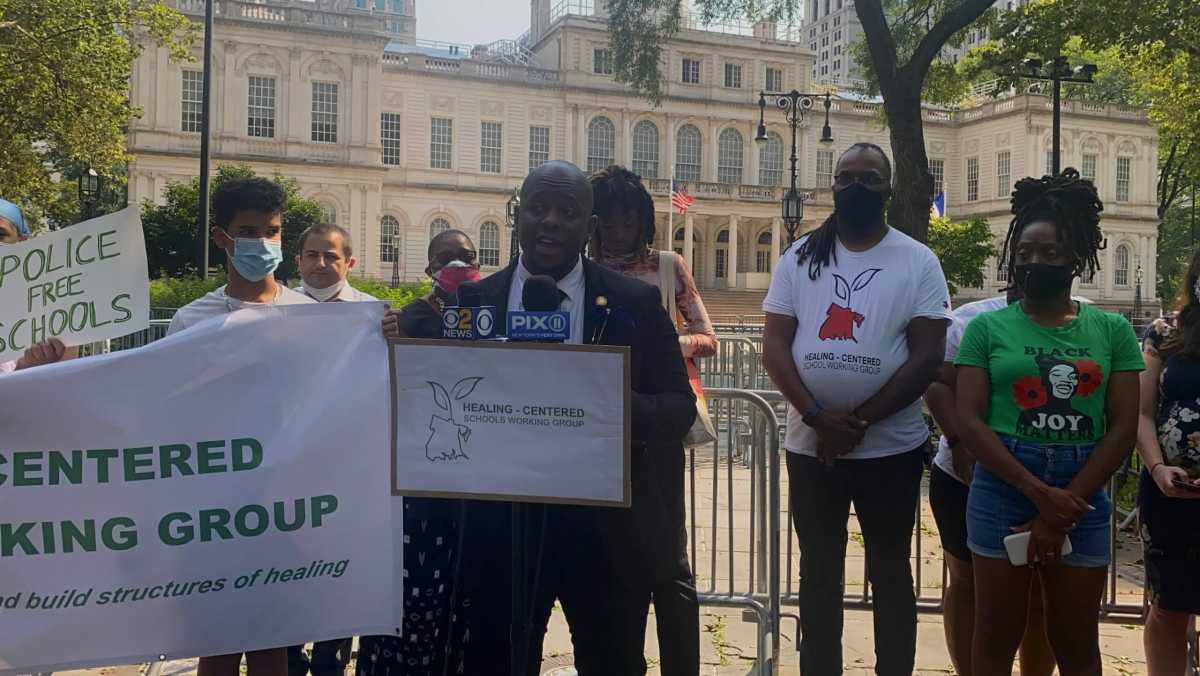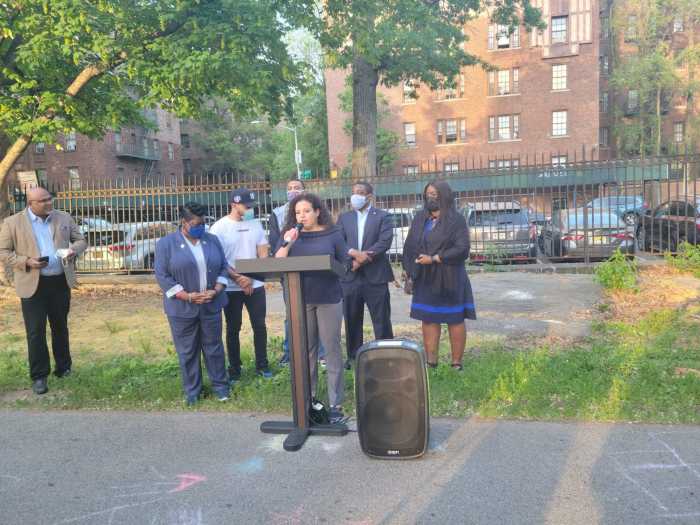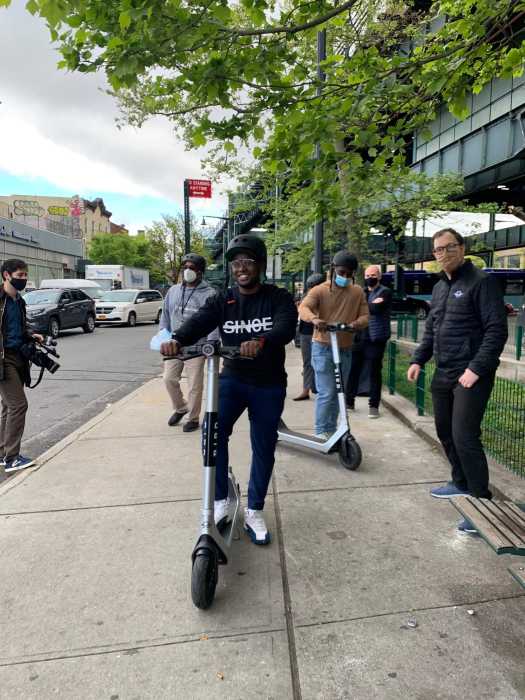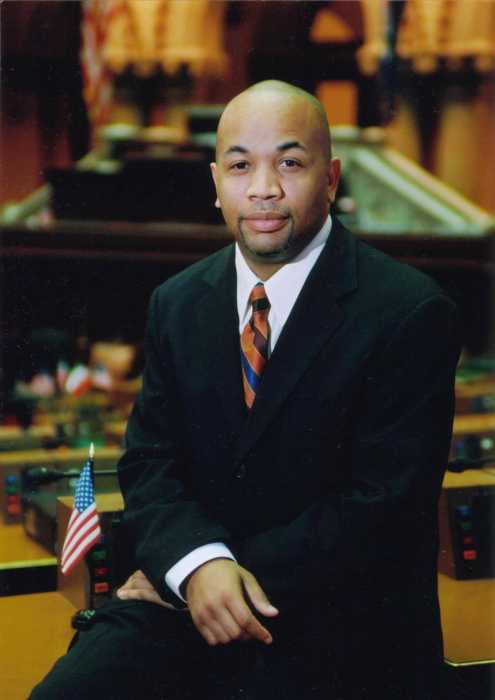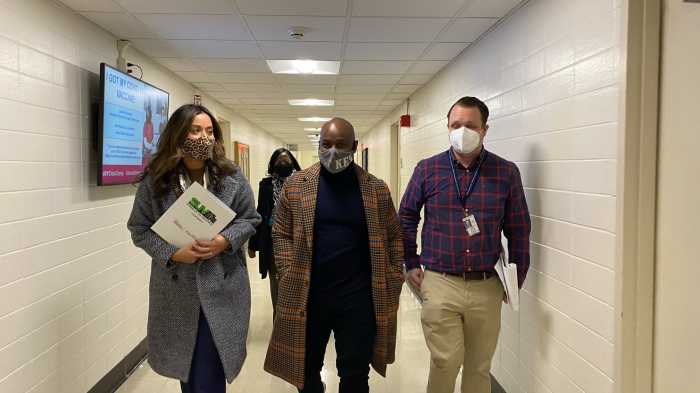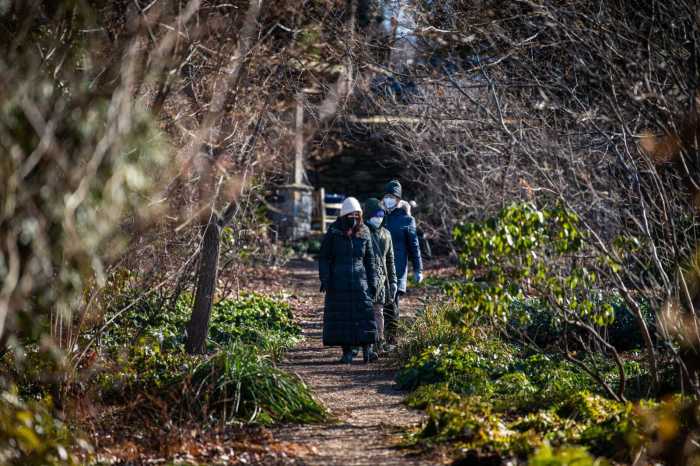NYC schools have long failed to provide support or address trauma experienced by Black and Latinx students, low-income and unhoused students, multilingual learners and immigrant students, and other students of color.
Recognizing this, on July 22, the Healing-Centered Schools Task Force, a group convened by Public Advocate Jumaane Williams and the Healing-Centered Schools Working Group, and led by city Councilman Kevin Riley, students, parents, educators, advocates and mental health providers, announced new recommendations to ensure the NYC Department of Education (DOE) takes meaningful steps to address students’ trauma related to COVID-19 and longstanding racial inequities.
While the DOE has made initial efforts to advance healing-centered change in the upcoming school year, many believe the changes do not go far enough to address underlying structures, policies and inequities in schools that continue to criminalize and traumatize students, inhibiting academic progress and, in many cases, re-traumatizing students.
“As we approach in-person learning this fall, the focus for the upcoming school year is to welcome our students back into an environment that is centered in healing the traumatic experiences they went through due to COVID-19,” Riley said. “The challenges we all witnessed, including those present prior to the pandemic, will be the tools to help us get through future adversities.”
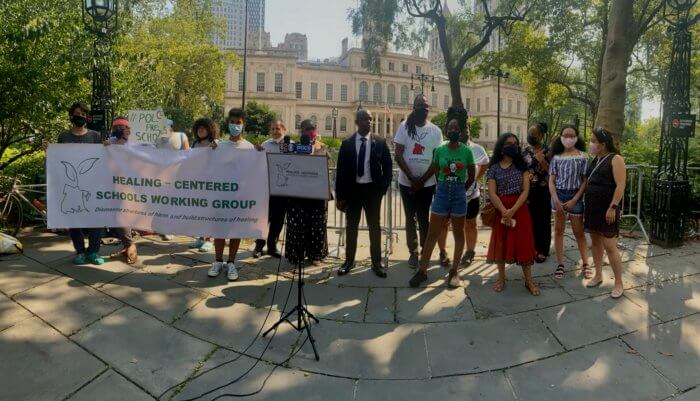
The Task Force’s recommendations, based on community listening sessions held across the city, urge the DOE to:
- Address Trauma When Schools Reopen: The DOE should acknowledge and apologize for their role in the harm families and staff experienced, provide schools with resources, staff, training and coaching to support students’ social-emotional needs and increase parent and student engagement and provide greater language access resources.
- Provide Healing-Centered Transition Plans and Support: The DOE should communicate that all schools will shift to healing-centered practices during the 2021-2022 school year and provide a transition plan, district-level support staff, and funding to students, parents and frontline staff to lead healing-centered school change as well as fund intensive pilot sites in a small number of schools.
- Remove Police from Schools: The DOE should remove policing from schools by disbanding School Safety Division and halt plans to create policing division within DOE, divest from metal-detection equipment and surveillance technology, cease data-sharing to the NYPD and re-allocate funds to create youth, parent and educator-led solutions that center liberation and restorative justice.
- Invest in Restorative Justice Programming to Behavior: The DOE should fund and support the creation of dedicated spaces in each school for restorative practices; fund trainings for communities on mediation, restorative practice and conflict resolution, compensate students to become restorative justice facilitators and peer mediators and develop and pilot suspension diversion program that connects students with mental health care and reduces time out of school.
- Provide Mental Health Supports & Staff: The DOE should launch a Mental Health Continuum to support the behavioral health needs of students in 33 high-need schools, which includes a team of clinicians that assess mental health needs, ensure a ratio of one counselor and one social worker for every 50 students, build mental health check-ins into school schedules and expand access to school-based clinics.
- Invest in Culturally-Responsive Education & ELL Access: The DOE should create a board representative of different cultures and communities who will compile culturally responsive education resources; require meetings between students and staff to facilitate feedback on academic programming; and dedicate $100 million to provide targeted support to English Language Learners (ELLs) who were denied critical services during the pandemic.
- Invest in Staff & Professional Development: The DOE should recruit school staff who are more representative of school communities; build healing-centered practices into educator expectations and evaluations; train school staff to provide trauma-responsive instruction and de-escalate mental health challenges; and expand anti-bias training for all staff.
- Reduce Class Sizes: The DOE should reduce class sizes to support learning and a healing-centered environment. Class sizes should be reduced consistent with the mandates of the Contracts for Excellence Law: a maximum of 20 students per class in elementary school, 23 students per class in middle school and 25 students per class in high school.
- Invest in Technology/Devices for Families: The DOE should provide free, universal broadband to all DOE families; provide accessible, functioning remote learning devices to all families; and collaborate with the City Council and the Comptroller to create a public-facing database to track capital investments provided to and ventilation upgrades needed in each DOE school.
- Amplify Parent & Student Voices: The DOE should launch programs to create and expand student councils and other school-based and district-based student advocacy groups empowered to provide feedback to Principals and Superintendents and should revise school budget and Comprehensive Education Plan processes to increase family involvement.
- Expand Access to Arts, Athletics and Extra-Curriculars: The DOE should expand physical spaces needed for art, athletics and enrichment programs; dedicate additional funds to the Public Schools Athletics League (PSAL) for schools to enhance/build an equitable athletic program; and take steps to expand the corps of staff conducting art, athletic and other and enrichment programs.
- Ensure Accountability & Implementation: The DOE should take meaningful steps to implement these recommendations, including by following a recommended timeline. To ensure accountability and transparency, the Task Force has requested quarterly meetings to discuss the status of implementation efforts, will host public actions, and will collaborate with the Office of the Public Advocate and the Healing-Centered Schools Working Group to conduct oversight efforts.
The past year and a half has only exacerbated these challenges. A recent study from the United Hospital Fund found that between March and July 2020 alone, 4,200 of New York State’s approximately 4 million children lost a parent or caregiver to COVID-19. Of these deaths, 57% where in the Bronx, Brooklyn and Queens, disproportionately impacting Black, brown and poor students. Additionally, Black students endured additional individual and collective trauma amidst a heightened national discourse about anti-Black racism and police violence against Black communities.
Now, with an influx of billions in additional COVID-19 relief funding from the state and federal government, the DOE is well-positioned to make the changes outlined in these recommendations which will create long-lasting support structures and programs that will allow students with trauma to heal and learn. In fact, the Task Force met with DOE Deputy Chancellor of School Climate & Wellness LaShawn Robinson earlier this month to present the recommendations and to discuss paths toward implementation and potential obstacles to success. Robinson’s feedback, including her team’s recommendations on where to begin building healing-centered change, informed the Task Force’s recommendations. The Task Force will continue to liaise with the DOE on these recommendations and has demanded quarterly status meetings with the DOE to discuss implementation.
“The African proverb ‘It takes a village to raise a child’ is exactly what our NYC public schools need to transform into healing centered schools,” said Amy Tsai, Task Force parent representative. “Each of us students, educators, parents, and community members have a role to play to participate and interact in order for our children to grow in a safe and healthy successful learning environment. Our students, parents, and front-line educators must be at the center of all conversations starting with: no more school policing, assess current disciplinary policy, remove punitive practices, more mental health providers on site, uniformed citywide programing, smaller class sizes, language access, compensation for parent and student volunteer roles, and setting standard policies on healing-centered practices on comprehensive educational plans (CEP) and district comprehensive educational plans (DCEP). These Recommendations are an opportunity to build on the social-emotional learning the Department of Education has invested in and to provide restorative and trauma justice.”

